AMAZING SPIDER-MAN ANNUAL #5
F/VF: 7.0
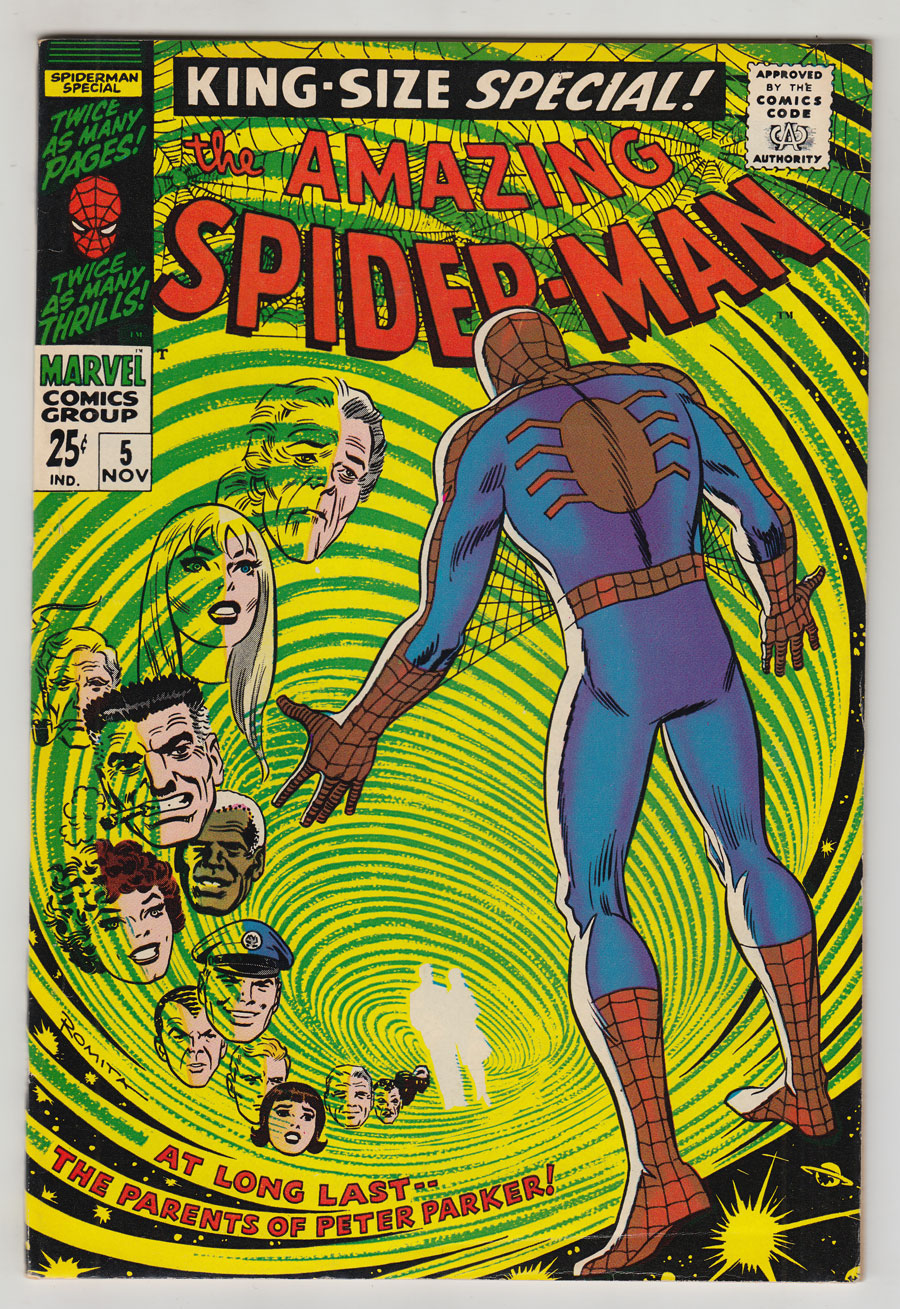
(Stock Image)

--
Accepting Offers
--
Offers
PUBLISHER: Marvel
COMMENTS: glossy! ow/white pgs
Romita cover; origin & 1st app. Peter Parker's parents (Richard and Mary); COMIC BOOK IMPACT rating of 6 (CBI)
Pennsylvania Dutch Copy
Read Description ▼
Romita cover; origin & 1st app. Peter Parker's parents (Richard and Mary); COMIC BOOK IMPACT rating of 6 (CBI)
Pennsylvania Dutch Copy
DESCRIPTION
glossy! ow/white pgs
Romita cover; origin & 1st app. Peter Parker's parents (Richard and Mary); COMIC BOOK IMPACT rating of 6 (CBI)
Pennsylvania Dutch Copy
Artists Information
Frank Giacoia (July 6, 1924 – February 4, 1988) was an American comics artist known primarily as an inker. He sometimes worked under the name Frank Ray, Giacoia made the rounds to almost every Golden Age publisher, notably working on Flash and Batman stories, he also worked at Timely during this period. In the Silver Age Frank worked on many Jack Kirby pages, particularly in Captain America, and he also notably inked the first appearance of the Punisher in AMS #129.
John Romita was one of the driving forces behind Marvel's Silver Age, he took up the reins on Spider-Man following the departure of Steve Ditko with issue #38. Romita's run on Spider-Man would be long and significant, introducing characters including Mary Jane Watson, the Kingpin and many others. He would be a major contributor to the entire Marvel line throughout the 1970s including designing the look of The Punisher.
Marie Severin was an American comics artist and colorist best known for her work for Marvel Comics and the 1950s' EC Comics. She is an inductee of the Will Eisner Comics Hall of Fame and the Harvey Awards Hall of Fame. Frank Jacobs, in his 1972 biography of EC publisher William M. Gaines, wrote, "There was Marie Severin, Gaines's colorist, and a very moral Catholic, who made her feelings known by coloring dark blue any panel she thought was in bad taste. [EC editor Al] Feldstein called her 'the conscience of EC."'
Romita cover; origin & 1st app. Peter Parker's parents (Richard and Mary); COMIC BOOK IMPACT rating of 6 (CBI)
Pennsylvania Dutch Copy
Artists Information
Frank Giacoia (July 6, 1924 – February 4, 1988) was an American comics artist known primarily as an inker. He sometimes worked under the name Frank Ray, Giacoia made the rounds to almost every Golden Age publisher, notably working on Flash and Batman stories, he also worked at Timely during this period. In the Silver Age Frank worked on many Jack Kirby pages, particularly in Captain America, and he also notably inked the first appearance of the Punisher in AMS #129.
John Romita was one of the driving forces behind Marvel's Silver Age, he took up the reins on Spider-Man following the departure of Steve Ditko with issue #38. Romita's run on Spider-Man would be long and significant, introducing characters including Mary Jane Watson, the Kingpin and many others. He would be a major contributor to the entire Marvel line throughout the 1970s including designing the look of The Punisher.
Marie Severin was an American comics artist and colorist best known for her work for Marvel Comics and the 1950s' EC Comics. She is an inductee of the Will Eisner Comics Hall of Fame and the Harvey Awards Hall of Fame. Frank Jacobs, in his 1972 biography of EC publisher William M. Gaines, wrote, "There was Marie Severin, Gaines's colorist, and a very moral Catholic, who made her feelings known by coloring dark blue any panel she thought was in bad taste. [EC editor Al] Feldstein called her 'the conscience of EC."'

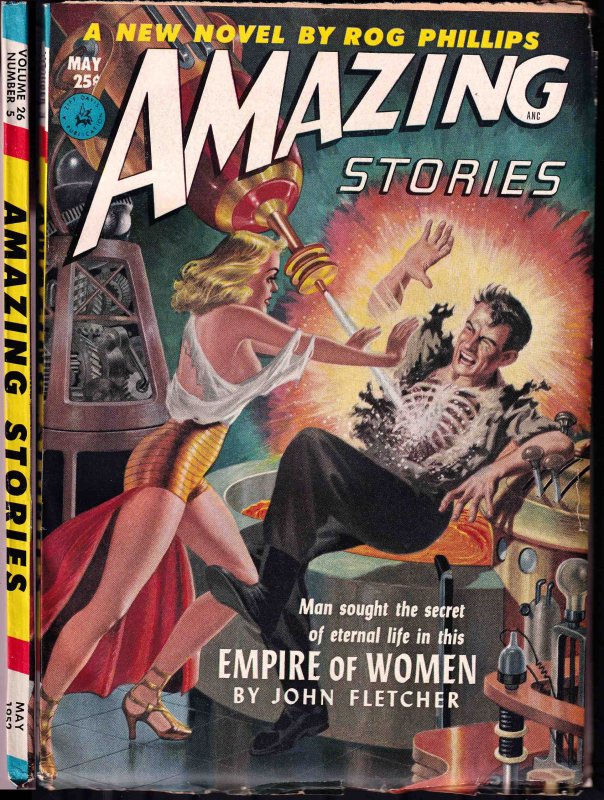
AMAZING STORIES (Pulp) V26 #5 Pulp
May, 1952 (V26 #5); A nearly topless woman shoves a man into a flesh-blasting laser; classic ribcage cover by Lawrence Stevens
May, 1952 (V26 #5); A nearly topless woman shoves a man into a flesh-blasting laser; classic ribcage cover by Lawrence Stevens
Experimenter/Ziff-Davis FN+: 6.5


AMAZING STORIES (Pulp) V26 #5 Pulp
May, 1952 (V26 #5); A nearly topless woman shoves a man into a flesh-blasting laser; classic ribcage cover by Lawrence Stevens
ow/white pages
ow/white pages
May, 1952 (V26 #5); A nearly topless woman shoves a man into a flesh-blasting laser; classic ribcage cover by Lawrence Stevens
ow/white pages
ow/white pages
Experimenter/Ziff-Davis FN: 6.0

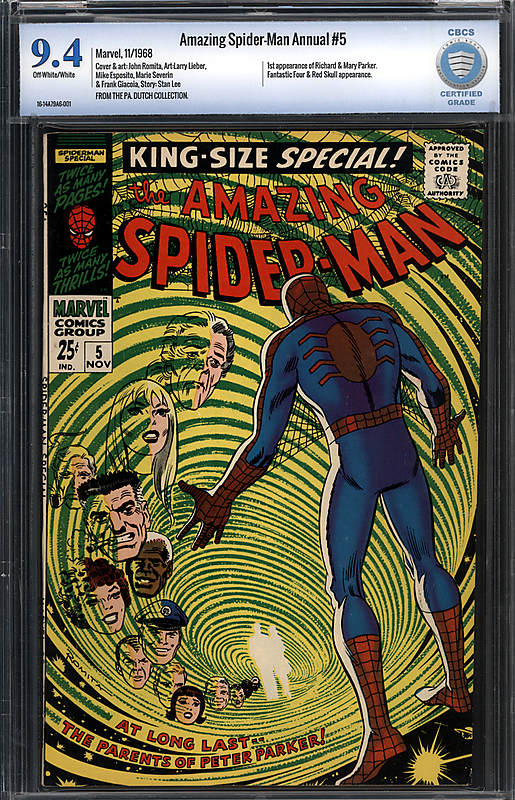
AMAZING SPIDER-MAN ANNUAL #5
Marvel CBCS NM: 9.4
ow/white pgs
Romita cover; origin & 1st app. Peter Parker's parents (Richard and Mary); COMIC BOOK IMPACT rating of 6 (CBI)
Pennsylvania Dutch Copy
Romita cover; origin & 1st app. Peter Parker's parents (Richard and Mary); COMIC BOOK IMPACT rating of 6 (CBI)
Pennsylvania Dutch Copy
ow/white pgs
Romita cover; origin & 1st app. Peter Parker's parents (Richard and Mary); COMIC BOOK IMPACT rating of 6 (CBI)
Pennsylvania Dutch Copy
Romita cover; origin & 1st app. Peter Parker's parents (Richard and Mary); COMIC BOOK IMPACT rating of 6 (CBI)
Pennsylvania Dutch Copy

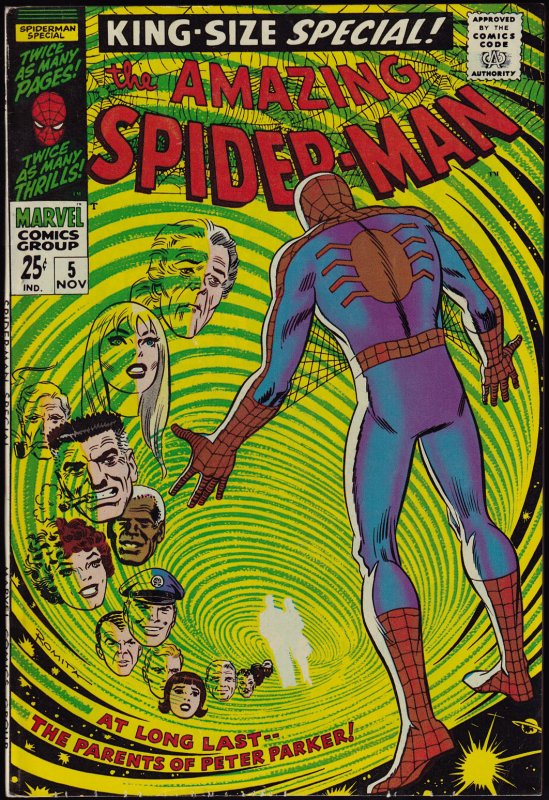
AMAZING SPIDER-MAN ANNUAL #5
Marvel NM-: 9.2
glossy! white pages
Romita cover; origin & 1st app. Peter Parker's parents (Richard and Mary); COMIC BOOK IMPACT rating of 6 (CBI)
Romita cover; origin & 1st app. Peter Parker's parents (Richard and Mary); COMIC BOOK IMPACT rating of 6 (CBI)
glossy! white pages
Romita cover; origin & 1st app. Peter Parker's parents (Richard and Mary); COMIC BOOK IMPACT rating of 6 (CBI)
Romita cover; origin & 1st app. Peter Parker's parents (Richard and Mary); COMIC BOOK IMPACT rating of 6 (CBI)

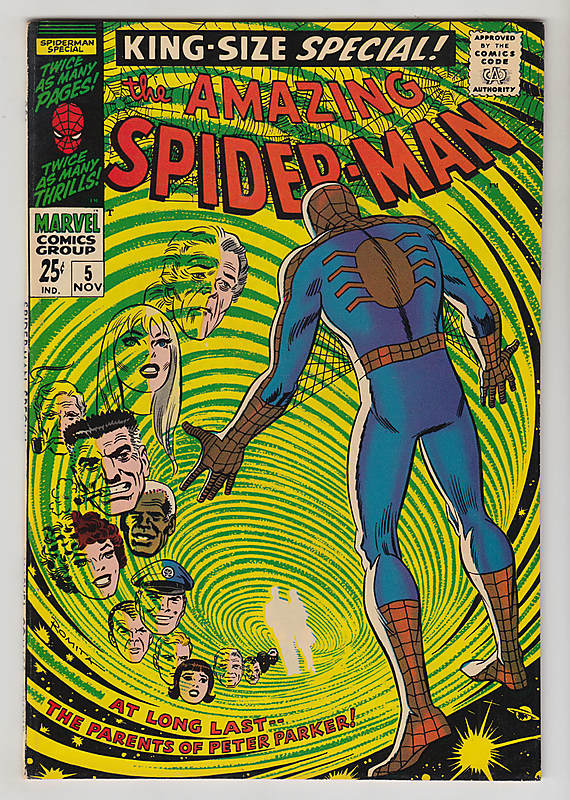
AMAZING SPIDER-MAN ANNUAL #5
Marvel NM-: 9.2
glossy!
Romita cover; origin & 1st app. Peter Parker's parents (Richard and Mary); COMIC BOOK IMPACT rating of 6 (CBI)
Pennsylvania Dutch Copy
Romita cover; origin & 1st app. Peter Parker's parents (Richard and Mary); COMIC BOOK IMPACT rating of 6 (CBI)
Pennsylvania Dutch Copy
glossy!
Romita cover; origin & 1st app. Peter Parker's parents (Richard and Mary); COMIC BOOK IMPACT rating of 6 (CBI)
Pennsylvania Dutch Copy
Romita cover; origin & 1st app. Peter Parker's parents (Richard and Mary); COMIC BOOK IMPACT rating of 6 (CBI)
Pennsylvania Dutch Copy




